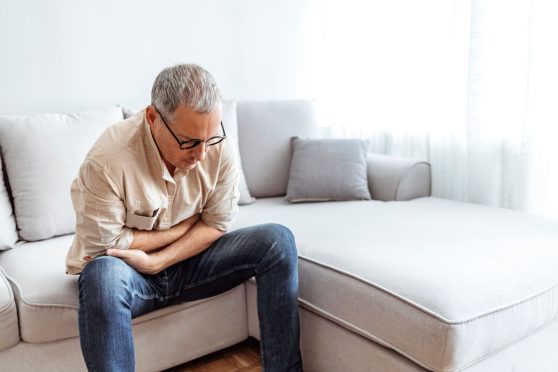Kidney stones may be tiny, but they cause what some call the worst pain they’ve ever experienced.
The stones are actually just hard deposits of mineral and acid salt that can block kidney function and land you in the hospital seeking relief, says Shaun Hager, DO, of Hartford HealthCare’s Tallwood Urology & Kidney Institute in Norwich.
The good news is there are steps you can take to avoid a run-in with kidney stones.
“We think that family history might play a role, but simple lifestyle changes can help even those who are predisposed avoid stone pain,” Dr. Hager says.
Dr. Hager suggests taking these five steps to prevent kidney stones from forming and becoming an issue.
1. Stay hydrated.
You may have heard this one before, but kidney stone prevention starts with hydration.
“I tell people to drink two to three quarts of water a day,” he says. “You want your urine to be clear.”
Water is the best option, but most fluids will help. What does not is dark soda, which contains high levels of phosphoric acid, a stone contributor.
Sprite and other lemony clear sodas, he says, are okay and you can boost helpful citrate levels by adding lemon.
> Related: A Lemon a Day Could Keep Kidney Stones Away
2. Follow a healthy diet.
A good diet can prevent a whole host of conditions and diseases and help you maintain a healthy weight.
But diets like DASH, which is meant to help lower your blood pressure, also emphasizes food that are lower in sugar and salt – two of the substances found in kidney stones.
In addition to watching your sugar and salt intake, you should eat no more than two servings of animal protein each day.
“Remember: A serving is the size of your hand,” says Dr. Hager.
3. Limit your salt intake.
This advice bears repeating – watch out for salt, in particular.
Too much salt in your diet means more salt in your urine. This increases the amount of calcium in your urine and puts you at higher risk for kidney stones.
It can be hard to stay away from salt, but Dr. Hager suggests limiting fast, processed and packaged foods, and dining at home more.
4. Eat leafy greens, nuts and tofu in moderation.
Although these foods are healthy, they also high levels of oxalate, which contributes to kidney stones.
Don’t avoid these foods entirely, just practice moderation.
“Mix your diet up. Don’t eat anything to excess,” Dr. Hager says.
5. Maintain calcium intake.
While this may seem odd since kidney stones contain calcium, your body needs at least 1,000 mg each day to function properly. Talk to your doctor about a supplement if you don’t think your diet provides enough.
Stone signs
One in nine people will get a kidney stone in their lifetime. And once you have one kidney stone, the risk of having a second stone in the next 10 years is 50%.
“That’s the number one risk factor,” Dr. Hager explains, citing other risks like chronic dehydration, obesity, diabetes, high blood pressure and high cholesterol.
Signs you have a kidney stone include:
- Pain in the back or the side. Pain can radiate to the front and down to the groin.
- Abdominal pain.
- Pain while urinating.
- Blood in the urine.
- Fever.
- Uncontrolled vomiting.
“The last two are particularly problematic, but all warrant a call or visit to a healthcare provider,” Dr. Hager says.
Treatment can range from medication and monitoring to medical procedures that break stones up so they pass through urine.


